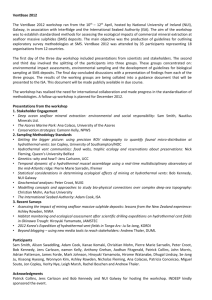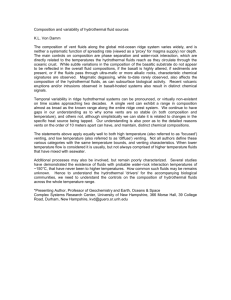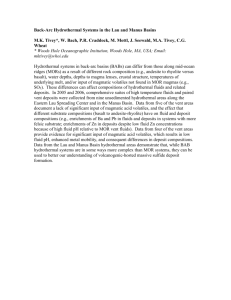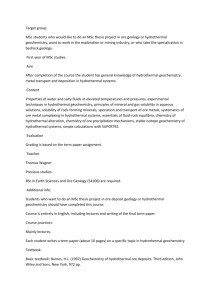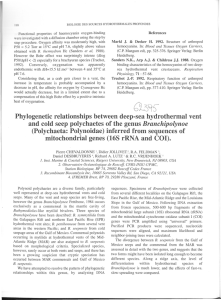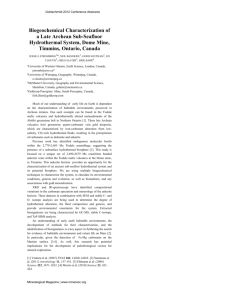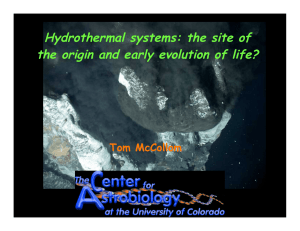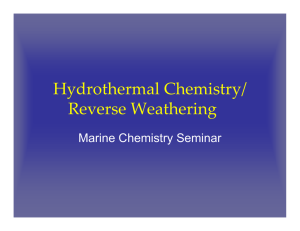Fluid-Rock Interactions and the Origin of Hot Spring Fluids Steven D’Hondt
advertisement
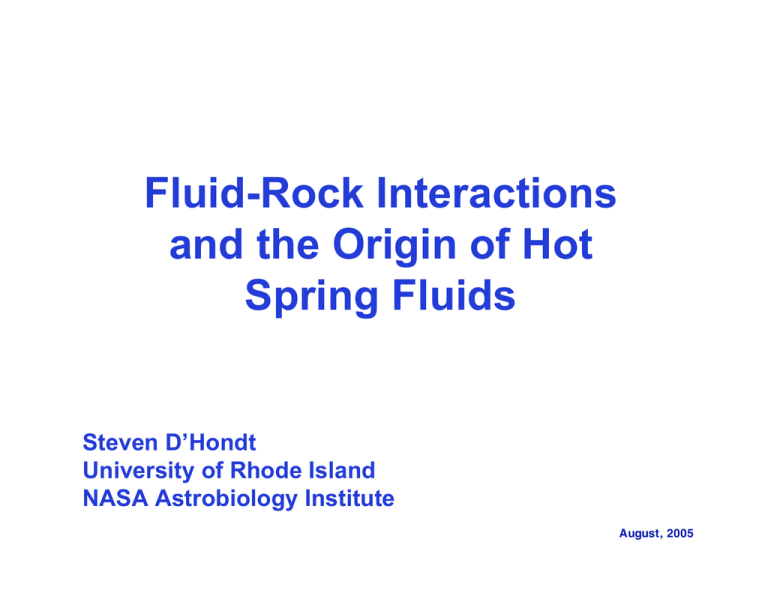
Fluid-Rock Interactions and the Origin of Hot Spring Fluids Steven D’Hondt University of Rhode Island NASA Astrobiology Institute August, 2005 Sources of Heat, Water and Chemicals in Hot Spring Fluids: • The local source of heat is usually magmatic. – Consequently, hot springs are usually in volcanically active regions (plate margins and mantle plume regions) – The ultimate sources of the heat are: subsurface radioactivity, crystallization of Earth’s core, and gravitational separation of heavy and light elements deep within the Earth. • The source of the water is usually groundwater (recycled precipitation), or, in the ocean, seawater. • The source of the dissolved chemicals is water-rock exchange in the hydrothermal system. D’Hondt 2005 Model of hydrothermal circulation General model Mid ocean ridge model Figure from T.D. Brock (www 7/05). Note that faults (fractures) often serve as conduits for the hydrothermal flow. D’Hondt Figure from D.S. Kelley (www 7/05). 2005 Tectonic settings of hydrothermal systems: plate margins Model of spreading ridge and subduction zone Plate tectonic margins (spreading ridges and subduction zones) Figures from USGS (www 7/05). D’Hondt 2005 Tectonic settings of hydrothermal systems: hot spots (mantle plumes?) Locations of hot spots = dots (above) Track of the Yellowstone hot spot [numbers = age (myrs)]. General model of hot spot motion. D’Hondt Figures from USGS (www 7/05). 2005 Water-rock interactions in hydrothermal systems: • Leaching of soluble elements from rock [e.g., Ca2+, H2S, Fe(II)] • Precipitation of low-solubility phases (e.g., Mgsilicates, CaCO3, SiO2) • Examples— – “Exchange” of rock Ca2+ for ocean Mg2+ in submarine basalts [and subsequent precipitation of calcite (CaCO3)] – Production of dissolved H2 by rock alteration, • e.g., during serpentinization of basalt, 3Fe(OH)2 Fe3O4 + H2 + 2H20. D’Hondt 2005

